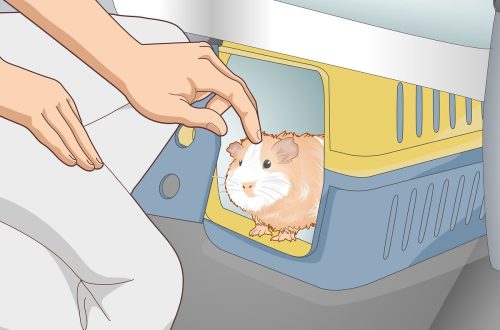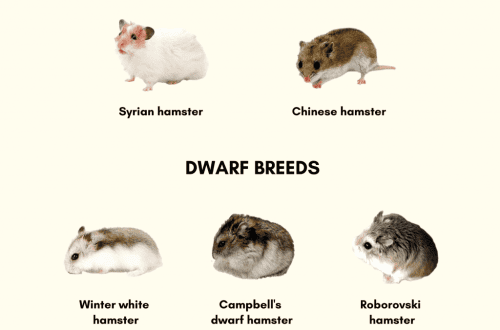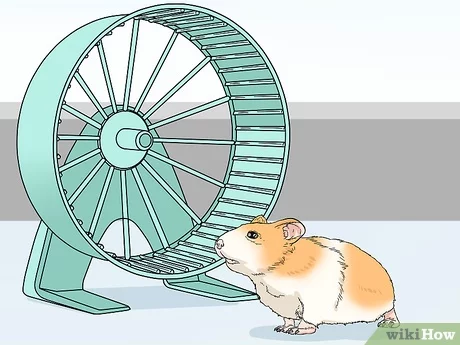
Hamster wheel: types and how to choose (photo)

Hamsters are known to be very active animals, constantly on the move. This behavior is due to the natural instincts of the rodent, which in the wild constantly has to run and relentlessly get food. Sometimes, looking for edible grains, roots or tasty grass, hamsters manage to run tens of kilometers.
When caring for a pet rodent, it is necessary to remember the origin of small animals, and provide them with a good level of activity to maintain physical fitness and a natural lifestyle. Often rodents living in small cramped cages cannot boast of excellent health, suffering from a violation of various body functions. In this case, a silent wheel for a hamster will be a salvation, which will allow him to run and be active. If you are interested in learning more about this, read our article why hamsters love to run on a wheel. And in this material we will look directly at the wheels themselves.
Contents
Types of wheels and how to choose the right one
Not only his health, but also physical safety will depend on the successful choice of a wheel for a hamster. There are dozens of varieties of running wheels for rodents, but not every one of them may be suitable for a particular cage and its inhabitant. First of all, you need to pay attention to the diameter of the wheel, since it determines for which breed of hamsters the manufacturer has prepared the simulator. A wheel for a Dzungarian or baby Syrian breed will be 14 to 16 cm in diameter, smaller wheels are only suitable for baby pygmy rodents, and adult Syrian hamsters will need a wheel with a diameter of 18 cm or more.

The wheel for the hamster should be large and comfortable so as not to create obstacles or traumatic consequences. A wheel that is too small will cause the rodent to stumble or bend, its legs will get stuck or get caught on the outside of the wheel, which can lead to spinal injuries, fractures or dislocations of the limbs.
Important! Khomkin.Ru warns: paw fractures are very common, including due to incorrect wheel designs. Hundreds of visitors come to our site for information about fractures. We hope that you will not need this and we ask you to choose the right wheels for the animals.
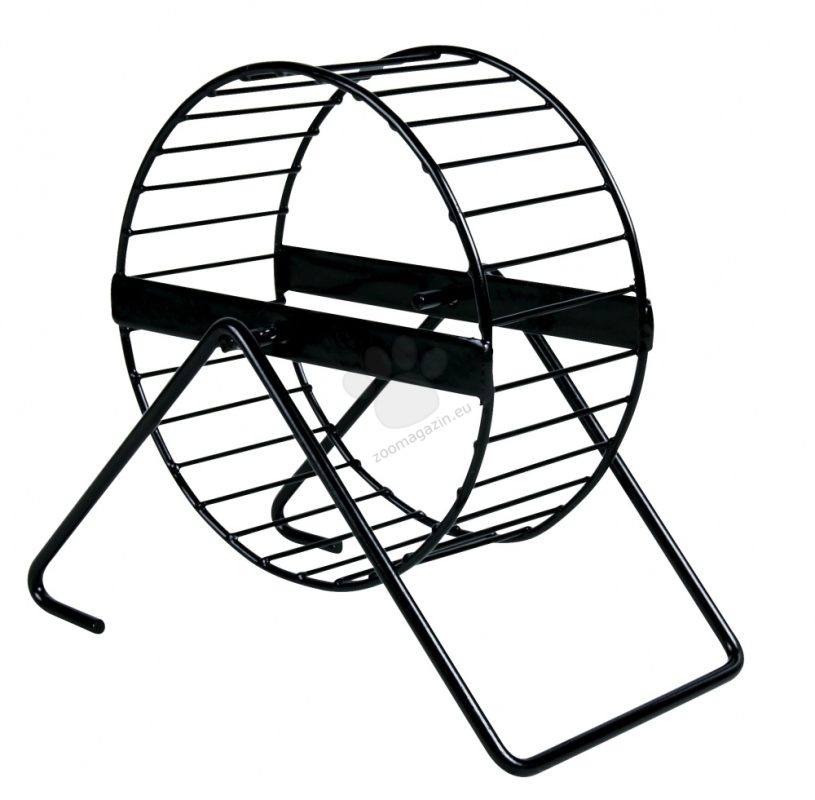 When determining which wheel is better, pay attention to the surface on which the animal will run. The lattice “path” is a potential hazard because the hamster can fall through the bars, injuring the paws or peeling off the skin. It is advisable to choose a silent wheel, the surface of which is made of solid plastic with small serifs for easy grip.
When determining which wheel is better, pay attention to the surface on which the animal will run. The lattice “path” is a potential hazard because the hamster can fall through the bars, injuring the paws or peeling off the skin. It is advisable to choose a silent wheel, the surface of which is made of solid plastic with small serifs for easy grip.
Iron mesh paths with small gaps into which a hamster’s foot cannot fall will also be safe. A convenient option would be a wooden hamster wheel, which is unlikely to injure the animal. At the same time, you don’t have to worry if the hamster starts to gnaw on the simulator, since the natural material will not harm the body.
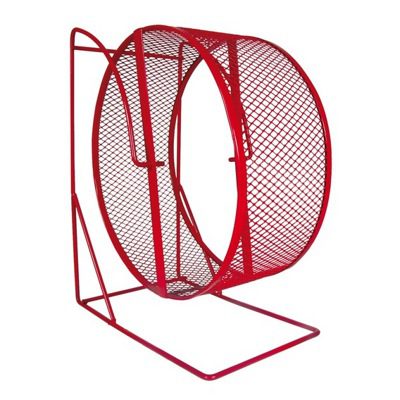 If the hamster is to run around in an iron wheel on a stand, then it is important to consider how to securely attach the device inside the cage. Some of these wheels have a stand that is very close to the running surface, causing a “scissor effect”. In this case, the foot, caught between the wheel and the stand, runs the risk of being cut off. When installing such a wheel, be sure to maintain a distance of at least 1 cm from the stand axis to the working surface of the simulator.
If the hamster is to run around in an iron wheel on a stand, then it is important to consider how to securely attach the device inside the cage. Some of these wheels have a stand that is very close to the running surface, causing a “scissor effect”. In this case, the foot, caught between the wheel and the stand, runs the risk of being cut off. When installing such a wheel, be sure to maintain a distance of at least 1 cm from the stand axis to the working surface of the simulator.
If you love and know how to craft, you can make a running wheel with your own hands.
Wheels by mounting method
Running wheels for hamsters are divided into three main types, which differ in how they are attached. For example:
- Mounting on the cage wall using special holders or strong wire (depending on the type of cage). The advantage of such mounts is to save cellular space, and the disadvantage is the possible tapping on the hamster house during movement;
- Mounting on the bottom of the cage is a running wheel on a special stand that holds the simulator. The disadvantage of such an installation is poor structural stability;
- Mounting an independent device, that is, a wheel on a stand, along the bottom of the cage will be the most successful and safe option that eliminates the risk of instability or overturning of the wheel.
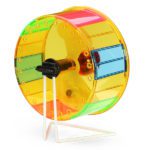 |
In addition, there is a good analogue of the traditional simulator – a running disc. The design is equipped with a stable stand on which the “plate” is fixed, preventing the rodent from rolling over or falling out while running.
In addition to the running wheel, there is another popular accessory for hamsters – a walking ball.
Upgraded wheels
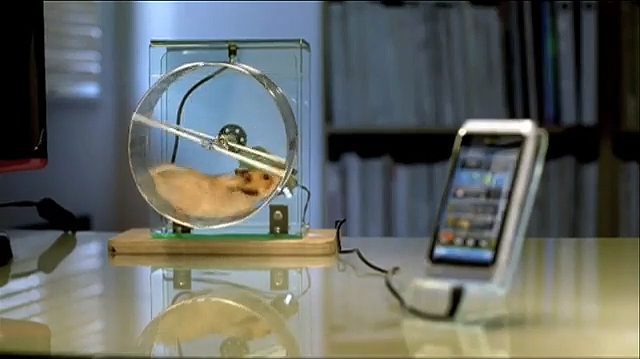
After a short operation of the wheel, many owners complain about extraneous squeaks or noises that the running wheels begin to create. If a metal wheel creaks, it can be lubricated with vegetable oil, and extraneous sounds will recede. In addition, the running wheel can be improved to make it as silent and useful as possible.
Some owners come up with a wheel for a hamster with a generator so that the rodent spends time running for the benefit not only for himself, but also for the owner’s environment. Often such things are made by hand, since they do not require much effort and technical steps, allowing you to get electricity for small purposes like charging a mobile phone, which an active rodent can handle.
Another way to reduce noise from your running wheel is to replace the plastic mount with a bearing. Then the wheel will work silently, and will also please the owners with an additional bonus, since such an invention can be used as a generator.
Let’s buy a wheel
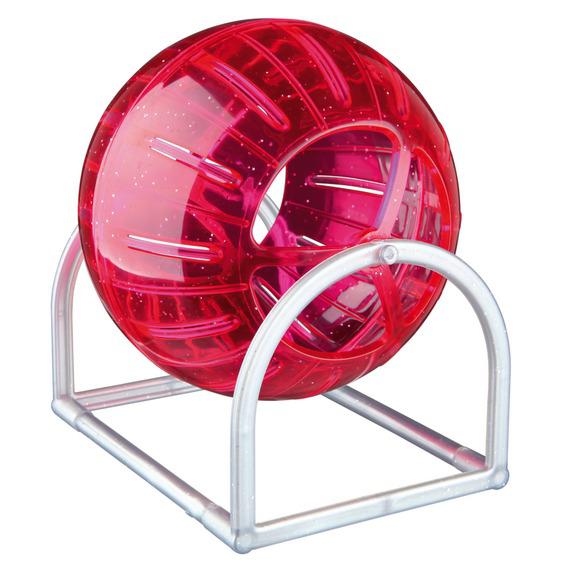 When choosing an active toy for your pet, try to choose large wheel with comfortable and protected surfaceto prevent injury to the rodent. One of the durable options for a wheel that the animal cannot chew through is metal varieties with a high-quality working surface. The distance between the twigs should be minimal so that the hamster is comfortable running and does not fall through the twigs.
When choosing an active toy for your pet, try to choose large wheel with comfortable and protected surfaceto prevent injury to the rodent. One of the durable options for a wheel that the animal cannot chew through is metal varieties with a high-quality working surface. The distance between the twigs should be minimal so that the hamster is comfortable running and does not fall through the twigs.
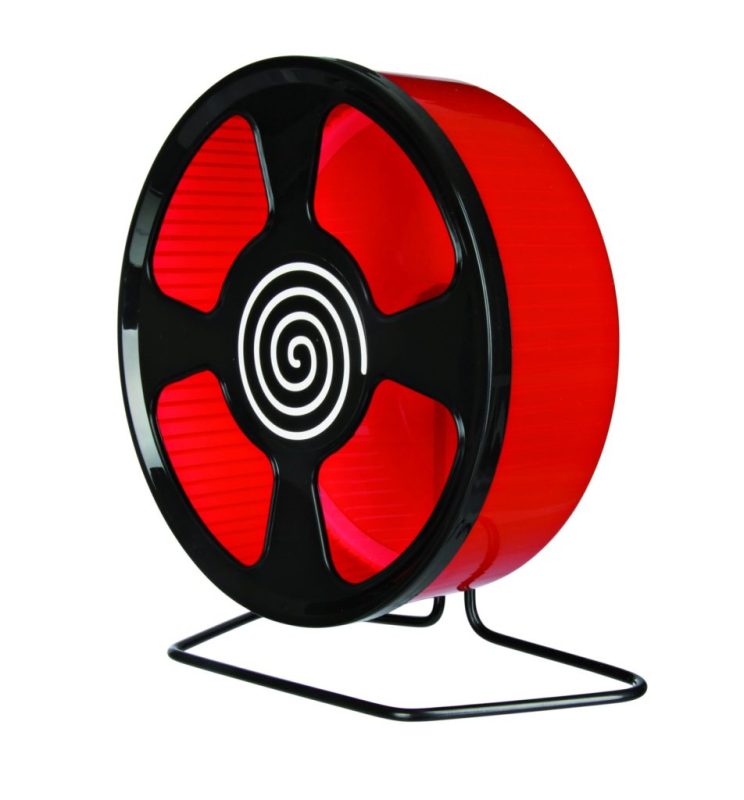 If possible, it is best to buy a wheel together with an animal that can evaluate the device on the spot. Firstly, there will be no error with the dimension of the wheel and it will immediately be seen how comfortable the animal feels in the new “toy”. Secondly, you can determine the level of convenience and safety of the item for a particular rodent.
If possible, it is best to buy a wheel together with an animal that can evaluate the device on the spot. Firstly, there will be no error with the dimension of the wheel and it will immediately be seen how comfortable the animal feels in the new “toy”. Secondly, you can determine the level of convenience and safety of the item for a particular rodent.
After purchasing and installing a running wheel, it is possible that the hamster will ignore it. In this case, our article “how to train a hamster on a wheel” will help you.
Hamster running wheels
3.8 (76%) 5 votes



